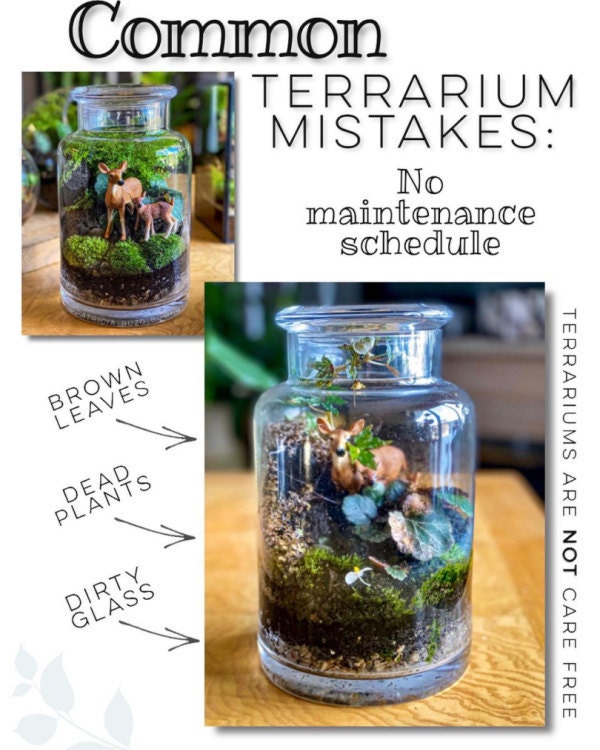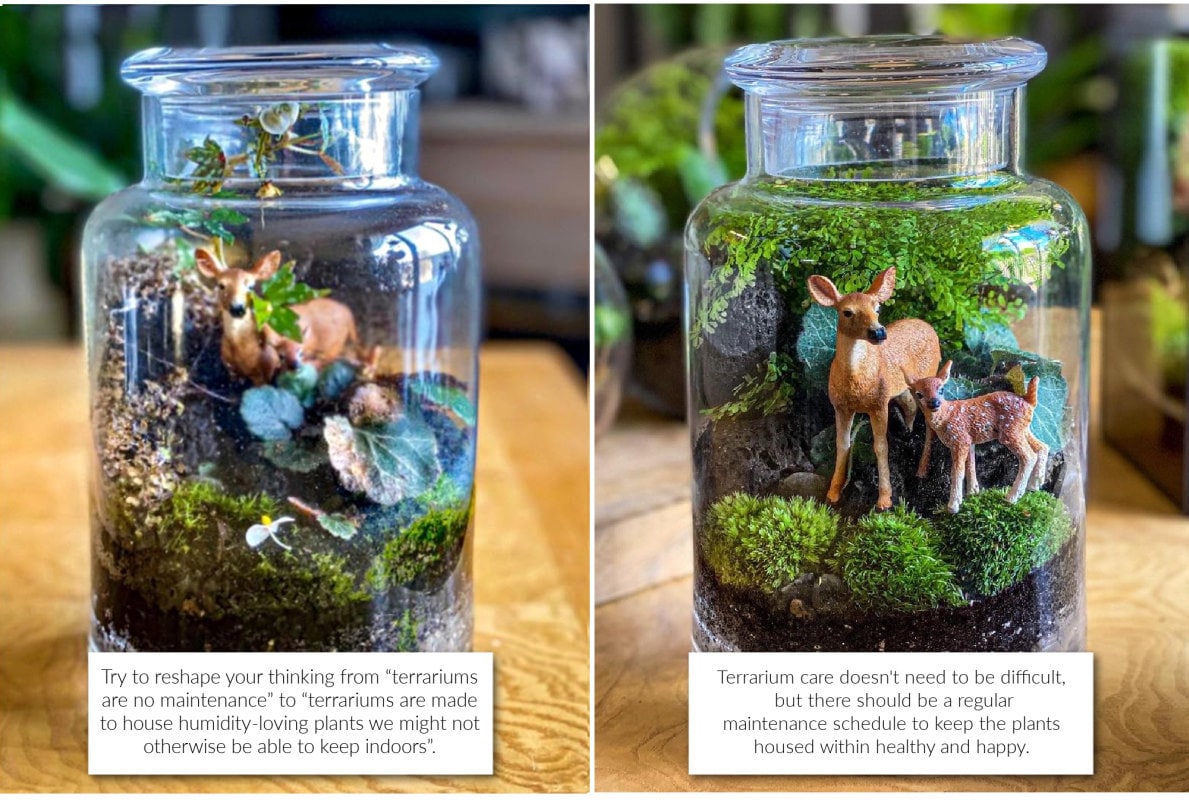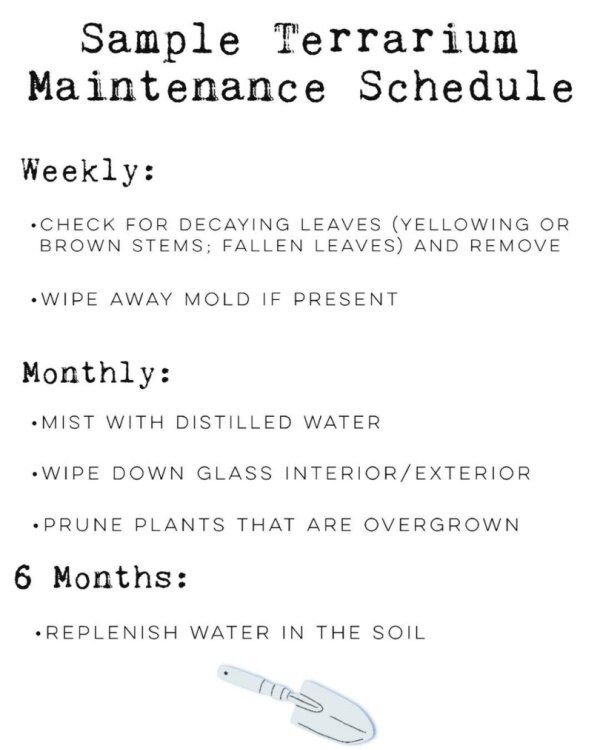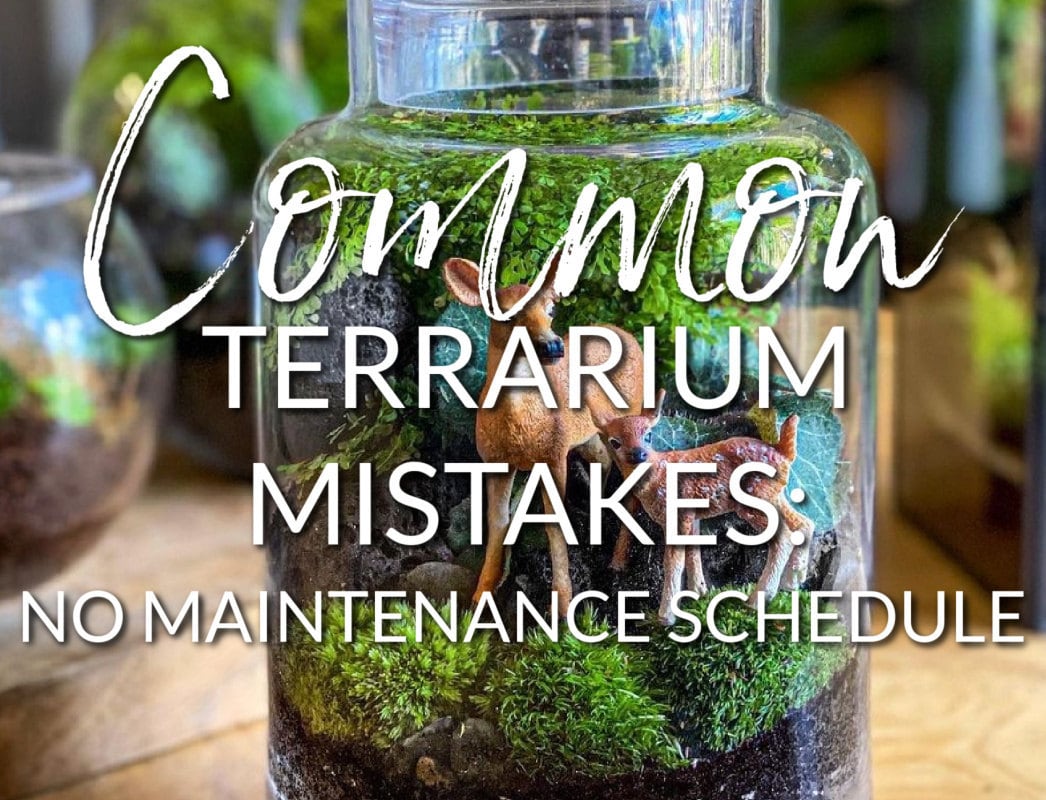A common misconception is that terrariums are care-free. People believe that you can seal it and set it aside not giving it another thought, but that is simply not the case. I’m not saying that terrarium care needs to be difficult, but there should be a regular maintenance schedule to keep the plants housed within healthy and happy. Try to reshape your thinking from “terrariums are no maintenance” to “terrariums are made to house humidity-loving plants we might not otherwise be able to keep indoors”. So instead of buying expensive humidifiers and watering and/or misting 10 times a day, we can keep more finicky species under glass thus reducing the need to try to replicate their native environment in our homes (which is virtually impossible). I will admit, some “terrarium plants” can adapt to grow as houseplants. But many cannot, such as mosses and a number of delicate tropicals.

As the photo above shows, a once beautiful terrarium can quickly go downhill when it isn’t maintained. But you can help your plants thrive by keeping to a regular maintenance schedule.
Weekly: Start by getting into the habit of doing a quick visual check every week. Look for decaying leaves or patches of moss
which will be yellow or brown and trim and remove them. Note that long terrarium scissors and tongs will make your job much easier. Next, look for any mold that may have started to form and wipe it away. I like to use a qtip for this task, but a damp paper towel will also work.

Monthly: Once a month clean the glass with a paper towel moistened with water (you can safely add a bit of white vinegar to clean glass: mix one part water to one part distilled vinegar). Wipe down both the inside and outside of the jar and lid. If your moss or plants are becoming overgrown, trim them now. Cuttings can be propagated so waste not!
This is also a good time to water your terrarium using distilled or rain water. Tip: distilled water is not only better for your plants but also does not cause hard water stains on the glass.
Every 6 months: Despite being closed many terrariums still lose water due to evaporation. Test the soil by sticking a finger in about an inch to see if it needs more water. If your terrarium is too big or small to get your hand in, visually inspect it. Damp soil will be darker than dry soil and will be cool to the touch. Depending on the size of your terrarium, add anywhere from 1 - 6 cups of water.

In conclusion, terrarium care doesn't need to take up a lot of your time. They key to success is consistency. If you get into the habit of regularly doing a quick visual inspection many problems can be avoided and they won't sneak up on you. In this way you will be able to enjoy your tiny garden under glass for many years to come.
Written by Patricia Buzo, author of the book A Family Guide to Terrariums
- Sign up for my newsletter to be the first to be notified of new blog posts like this one.

